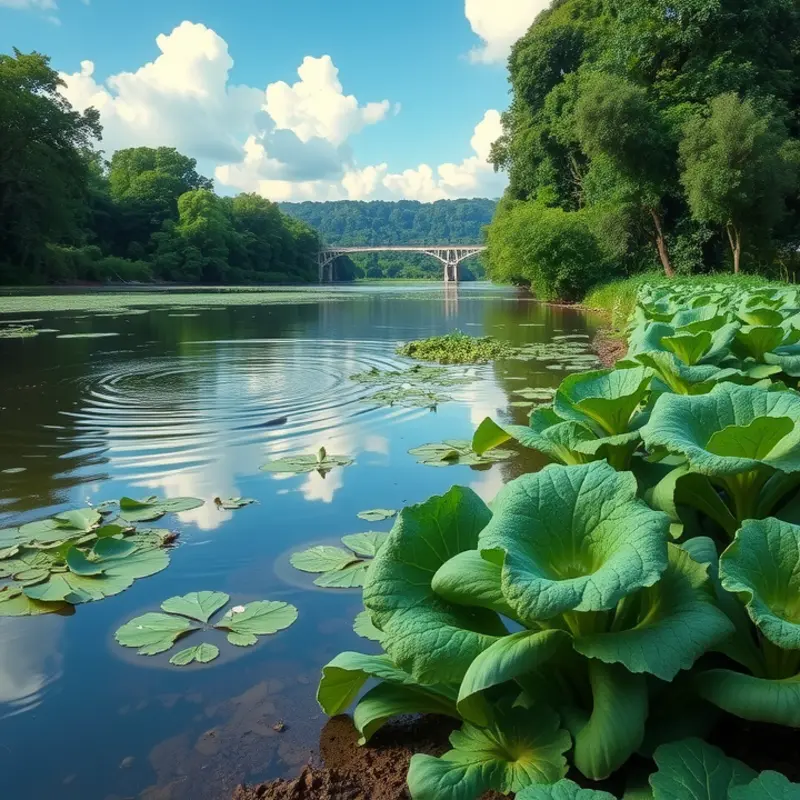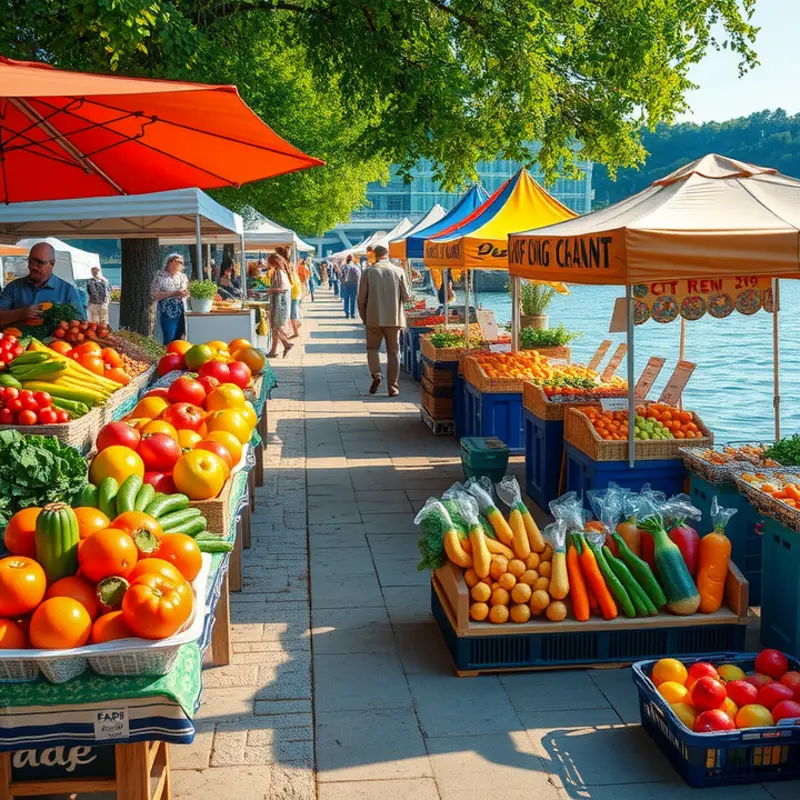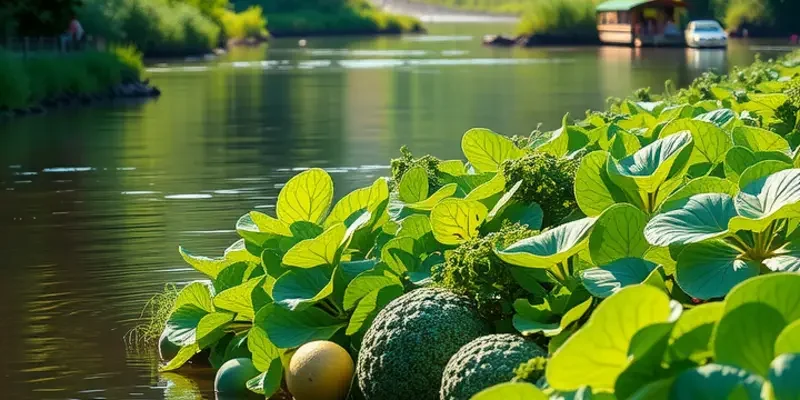Rivers have nourished civilizations for centuries, shaping not only landscapes but culinary traditions. From the bountiful fish of the Amazon to the fragrant spices of the Ganges, these waterways are vital in sourcing unique ingredients and time-honored cooking methods. Join us as we traverse the globe, exploring the food traditions born beside rivers, where natural abundance meets cultural expression.
Culinary Currents: How Rivers Shape Regional Cuisines

Rivers have long been the lifeblood of the regions they traverse, offering a bounty of resources that have indelibly shaped local culinary traditions. Communities residing by these waterways enjoy a wide range of fresh ingredients and have developed unique skills and dishes that reflect their symbiotic relationship with the river environment.
Fishing is unsurprisingly one of the core activities in riverine communities. From the Amazon’s wealth of exotic species to Europe’s iconic salmon runs, these watercourses provide essential proteins. In Southeast Asia, the Mekong River is particularly revered for its diverse fish species. The inhabitants have crafted dishes like pla som, a type of fermented fish, and the ever-popular fish sauce integral to Thai and Vietnamese cuisines. Mastery in swift cleaning and preparation of fish ensures the freshest ingredients are put to use, a skill that has been honed over generations. For those interested in improving their seafood preparation techniques, check out these tips for speedy seafood prep.
Beyond fish, river deltas and floodplains are fertile grounds that yield a plethora of crops, benefiting from natural irrigation. The Nile River in Egypt, with its annual floods, nurtures wheat fields that are foundational for Egypt’s flatbreads and pastries. Similarly, the indomitable Ganges in India supports vibrant rice paddies. This floodplain also cultivates aromatic spices and herbs contributing to the region’s rich and complex curries. These offerings from the earth not only support local diets but deepen culinary heritage, bringing a fragrant zest to native dishes.
Rivers also facilitate trade and cultural exchange, further enhancing local cuisines with external influences. The historic Silk Road, anchored by the Amu Darya River, was a conduit for exchanging spices, sugars, and cooking techniques. This flow of goods and ideas shaped regional gastronomy, leading to new flavors and dishes. Local cooks adopted and adapted these, enriching the regional palates and contributing to a shared yet diverse culinary identity.
Moreover, traditional river-centric preservation techniques such as drying, fermenting, and smoking, allow communities to maximize food resources. Scandinavian regions near the Baltic Sea employ smoking to preserve salmon, known as gravlax, a staple in Nordic cuisine. Meanwhile, Asian cultures utilize fermentation to extend the shelf life of fish and soy products, creating flavors that define their food culture today.
Rivers continue to shape and define the essentials of regional cuisines globally, providing resources, inspiration, and a means for culinary evolution. By understanding how these waterways influence ingredients and techniques, one gains insight into the broader narrative of human adaptability and creativity in food.
Festivals of Flavor: Celebratory Foods Along the Waterways

Rivers have long been the lifeblood of diverse cultures, serving as arteries not only for trade but also for gastronomic celebrations. These waterways birth an array of festivals, where communities gather to honor their local flora and fauna through food. Such festivals often highlight age-old cooking methods, family recipes, and meals that unite people in joyous feasting.
In France, the Loire Valley—renowned for its placid river—hosts an annual celebration focusing on freshwater fish. The Fête de la Loire offers an immersive experience into the regional culinary heritage. Traditional recipes, such as pike quenelles, a blend of fish purée delicately shaped and poached, take center stage. Often accompanied by rich, creamy sauce, these dishes highlight the region’s love for flavors melded gently over time.
Halfway across the world in Thailand, the Songkran festival along the Chao Phraya River marks the country’s New Year. While Songkran is widely known for its water fights symbolizing purification, food plays a pivotal role in the festivities. Communal tables brim with khao chae, a delicacy involving rice soaked in fragrant iced water, garnished with intricately carved vegetables and savory, sweet accompaniments.
Meanwhile, the banks of India’s Ganges see the convergence of thousands during the Kumbh Mela, one of the world’s most significant gatherings. As they gather for spiritual cleansing in the sacred river, the air thickens with the aroma of local dishes like khichdi, a wholesome mixture of rice and lentils. Prepared in gigantic cauldrons to feed multitudes, this dish not only nourishes the body but also stands testament to the community’s collective spirit.
In South America, Peru’s Puno Week unfolds beside Lake Titicaca, the highest navigable lake in the world. Celebrations honor the foundation of the Inca Empire, showcasing traditional dishes like tunta and other freeze-dried potato products. Processing these ancient staples involves a unique technique where potatoes are left to freeze overnight and dry under the sun, signifying the resourcefulness of Andean cuisines.
Even colder climates embrace river-based festivals, as seen in Scandinavia during Midsummer. Sweden’s celebrations spill over with coastal and riverine specialties like pickled herring, a dish that embodies the balance of sweet and savory palates so essential to Scandinavian cuisine. Served alongside crisp, boiled new potatoes and doused in tangy dill sauce, the taste is simple yet profound, capturing the freshness of the northern waters.
The festivity of flavors along these waterways is more than just culinary delight; it is a dialogue with tradition, environment, and community. It reflects a commitment to sustainable practices and mindful consumption. For those interested in eco-friendly culinary approaches, exploring ways to reduce food waste during such festivals might offer insightful solutions.
These festivals remind us that rivers are nature’s canvas, on which human culture paints stories both ancient and alive. Celebratory foods along these waterways not only honor the past but also nurture a shared future, one filled with continuity and connection.
Final words
River-based food traditions weave a narrative of history, culture, and sustenance that unites people across continents. From bountiful harvests to culinary celebrations, these traditions illustrate a deep respect for nature and community. Whether savoring river fish in a Japanese izakaya or gathering for a Nile feast, these culinary practices remind us that food is not just sustenance—it’s a reflection of the landscapes that shape our societies. Embracing these traditions allows us to celebrate the interconnectedness of our global food heritage and inspires us to respect the rivers that continue to nurture life.








